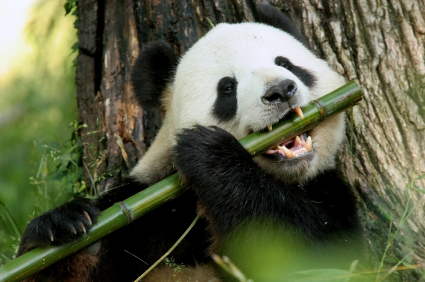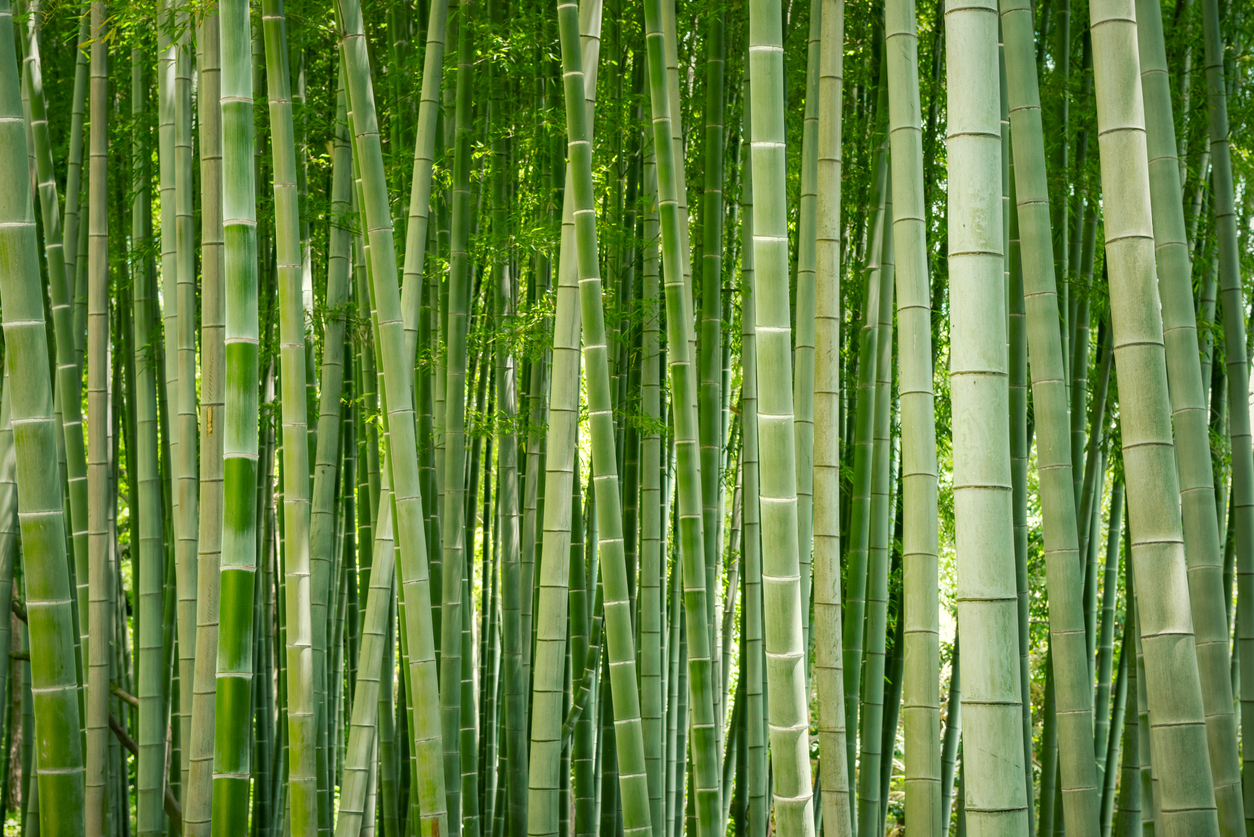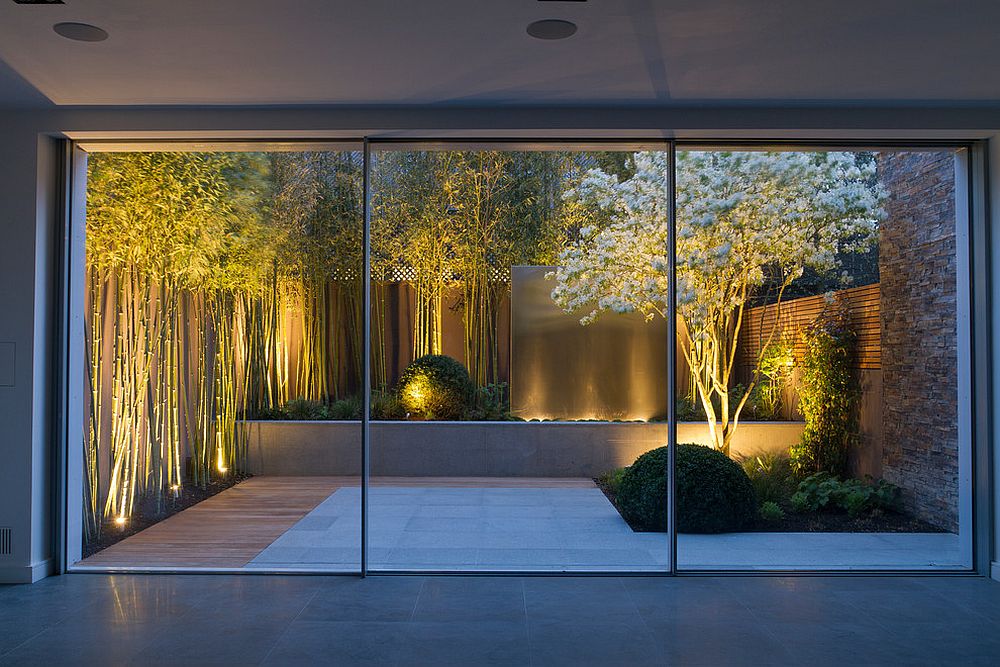
Pandas love it. These fuzzy, chubby giant pandas can eat anywhere from 20 to 40 pounds of bamboo a day. For them, it’s almost like eating grass (and you can imagine the lack of nutrition from that), so they often spend half their days foraging and chomping.
But why do pandas only eat bamboo? These aesthetic stalks of segmented green are always available where they live, pretty much all year around. For that very same reason, bamboo is one of the best substitutes for materials like cotton or hardwood.
Why the plant is so great
Bamboo is like a superfruit — but a superplant.
The average bamboo plant can grow up to 3 feet per day, a regeneration capability unmatched by any other greenery. After harvesting, it’s preexisting root system will naturally create another shoot, meaning no extra cultivation or farmer-type responsibilities for you.

Unlike trees, which can take over 20 years to regrow to be harvested all over again, a bamboo plant only takes 3-5 years to mature. And because of its complex root system, bamboo reduces soil degradation. Some countries are actually planting bamboo to combat deforestation.
Another pro: we get better air. Bamboo produces 30% more oxygen than trees and better absorbs carbon dioxide. As you might know, CO2 is the villain of climate change, and bamboo can help fight it.
It’s also extremely low maintenance, perfect for our society when everything seems to take so much time. No fertilizers or pesticides are needed (another plus for saving the earth!)
What bamboo can be used for
- Clothing

The textile industry is one of the most polluting industrial ventures in our world. The growth of fast fashion, thanks to brands like H&M and Forever 21, has pushed profit at the expense of our planet.
The core of the problem is the materials used: cotton and polyester.
Number crunching (feel free to skip if you’re not feeling math right now, I completely understand):
- 2.4% of the world’s agricultural land is dedicated to growing cotton, but consumes 25% of all pesticides, which means bye-bye to clean groundwater.
- Also: one kilogram of cotton fabric takes 10,000 liters of water to make. Talk about wasting our precious resources.
- Cotton, though, might actually be the lesser of the two evils. Our dearly-beloved synthetic fabrics, like polyester, have to be manufactured. When we process nylon, we get nitrous oxide, a greenhouse gas 300x worse than carbon dioxide.

But our savior plant, bamboo, shares none of these drawbacks. It efficiently uses water, and the fabric processed is naturally hypoallergenic, breathable, and antimicrobial. The clothes turn out luxuriously soft, so you can look good, feel good, and do good.

- Single-use plastics
We all know the harrowing reality of straws (save the turtles), but let’s not forget our favorite invention since sliced bread: sporks.
To enjoy our lunch time salads, pasta, anything else out of a Pyrex, we head down to the cafeteria and pluck a spork from its bin. In the Chinese takeout bag, beneath the serving of fried rice, are a couple of plastic forks, aimlessly thrown in. And just as mindlessly, we eat our food and toss it in the trash.
Small things like this are hard to keep up with, but that doesn’t mean we shouldn’t try.
This is where bamboo comes in.
Bamboo isn’t only for chopsticks — it can be fashioned into spoons, forks, knives, and even sporks. They’re reusable and light to stash in a lunch box, and after a quick wash, they’re ready for the next tray of mongolian beef.
In my house, we have a collection of bamboo spatulas (as seen in the bottom right of the photo below) my mom picked up at the H-Mart. Through the years, they’ve produced quality stir-fry time and time again. So if you happen to be looking for a new trusty stir-fry comrade, or just a sauce-pan stirrer, look no further.

On the flipside (haha get it), if you already have the tools to flip your quesadilla, consider investing in bamboo just for your personal well-being, which brings us to #3.
- Beautifying your living environment
You might’ve heard about the study that having plants in your workspace increases your productivity. (It’s true, Forbes said so.) I don’t know about you, but right now, I sure as hell need to get more things done.

And what better plant to spruce up your desk than a cute little bundle of bamboo stalks?
Sure succulents are everywhere on Pinterest, but bamboo is the house plant that’s in right now. Fun fact: most of the Internet calls them lucky bamboo plants. That’s your sign, you should get one.
Now assuming that you’re taking my word for what it is, and you’ve gone out to buy a bamboo plant in a span of 2 sentences, I’ll give you a few tips on taking care of your new best friend, courtesy of WikiHow.
- Name your lucky bamboo. I mean, I feel like this is just common courtesy nowadays.
- Water your lucky bamboo sparingly. Just enough to keep the roots covered, about once a week, and you’re all set.
- Keep your lucky bamboo out of direct sunlight. You may like being tan, but bamboo likes to keep its cool.
And bam! In about a week, your house plant will look like this:

Just kidding! There are many different types of bamboo for different purposes. For now, I would recommend the itsy bitsy potted one you can grab from IKEA. (But in all seriousness, if your yard looks like the one above, feel free to invite me over).
No matter how big your bamboo plant is, you should feel good about owning one. The air will be purer, your room will be greener, and you might just be a little bit happier.

By using a little more bamboo in our lives, we can help save the earth, not only for the next generations of humans, but pandas too.
Let’s go hug some trees, and go plant some bamboo.
Additional sources:

After reading this blog, all I want is for my future house to look like that picture. There’s a lot about bamboo that I feel like is unknown to the general public! I definitely didn’t realize that it had so many benefits. The fact I found really interesting was about their growth, and how quickly they can regenerate and mature. It seems like using bamboo not only makes sense for the environment, but it also puts us at an advantage. A lot of the times, substitutes that are better for the environment may not be supported because they may lack something that the more damaging, original version had. But in terms of using bamboo, we actually get higher quality items while helping our environment. One concern that I would think many people would have would be with pricing, as maybe bamboo items are priced higher than our common plastic goods. Even if this is the case, bamboo may be more accessible once more people begin supporting companies like Nooboo and begin truly weighing the pros and cons, economically and environmentally, of their decisions. I’m glad that you brought up a prominent issue, but more importantly offered an effective solution.
Super cool post! I think alternative materials/resources like bamboo are super interesting and I totally agree with you calling them a superplant. Bamboo has definitely been in the loop a lot more lately. I’ve seen bamboo sunglasses, bamboo phone cases, bamboo bicycles, and I’ve even swung bamboo baseball bats. The Chinese have been using bamboo since forever. My grandpa plays on a bamboo flute and I have a different bamboo instrument. It’s kind of a shame that bamboo has only recently become popular in western countries. The aesthetic aspect is a good start, but I’m excited to see what other uses we can find for bamboo (possible deca topic lol).
Woah, that’s incredible; I never knew how powerful bamboo truly was as a plant! I may be very out of the loop, but your in-depth explanation of the pros of bamboo may very well have been the best first-encounter I could have had with the subject! I’ve seen a ton of bamboo shirt ads on Instagram like in your picture, but I never knew what the hype was all about. The fact that its versatility outclasses many of its competitors with its numerous significant uses with such low maintenance as a resource truly amazes me. Thank you for sharing this valuable info!
Bamboo is incredible! My grandparents’ house is filled with bamboo products from utensils, chairs, tables, farming tools, and walking sticks. As a result, I’ve been aware of these more rudimentary uses, but I had no idea that you could make clothing out of bamboo. Seems like a great alternative to the resource-heavy production of cotton and synthetics. I’ll definitely check it out when I need to update my wardrobe. Aesthetics-wise, I’ve always loved the sight of a forest of bamboo. It’s really calming to hike through the towering green pillars that sway slightly in the wind. Anyways, really interesting post!